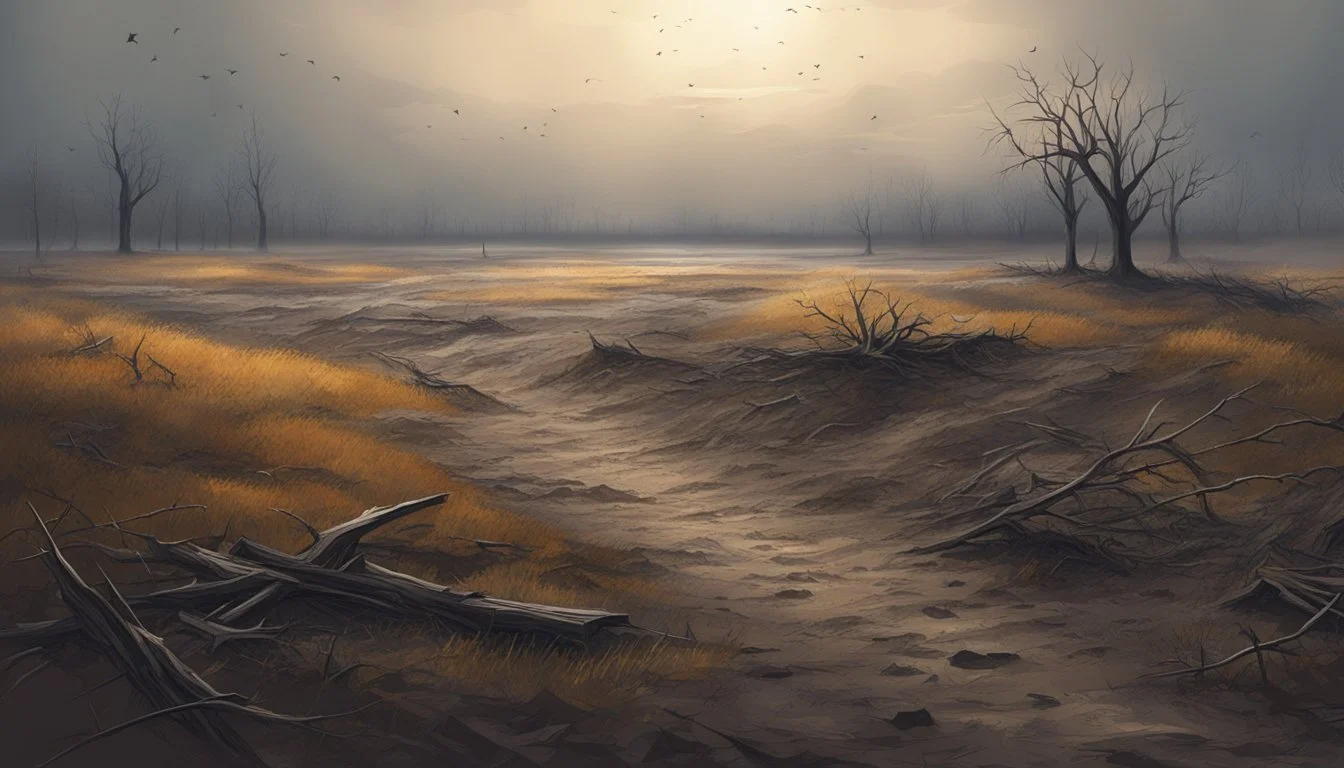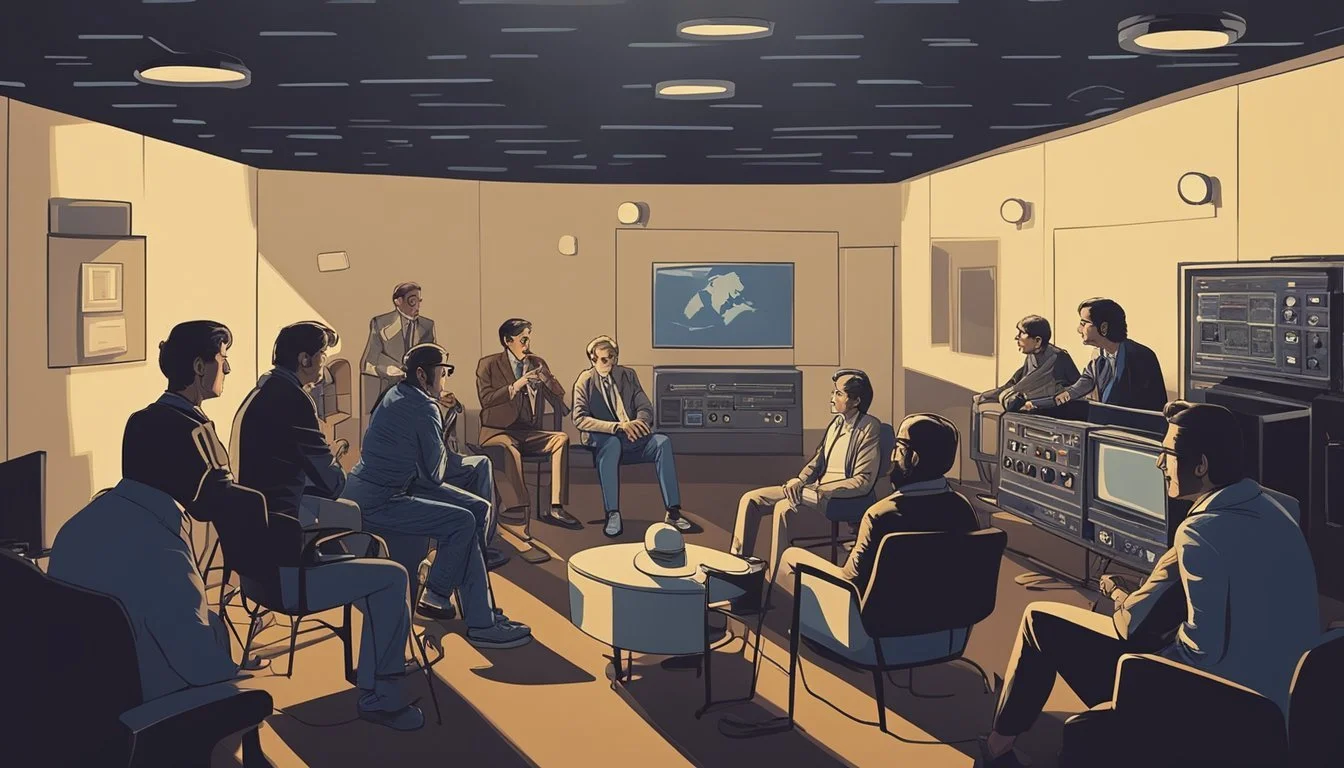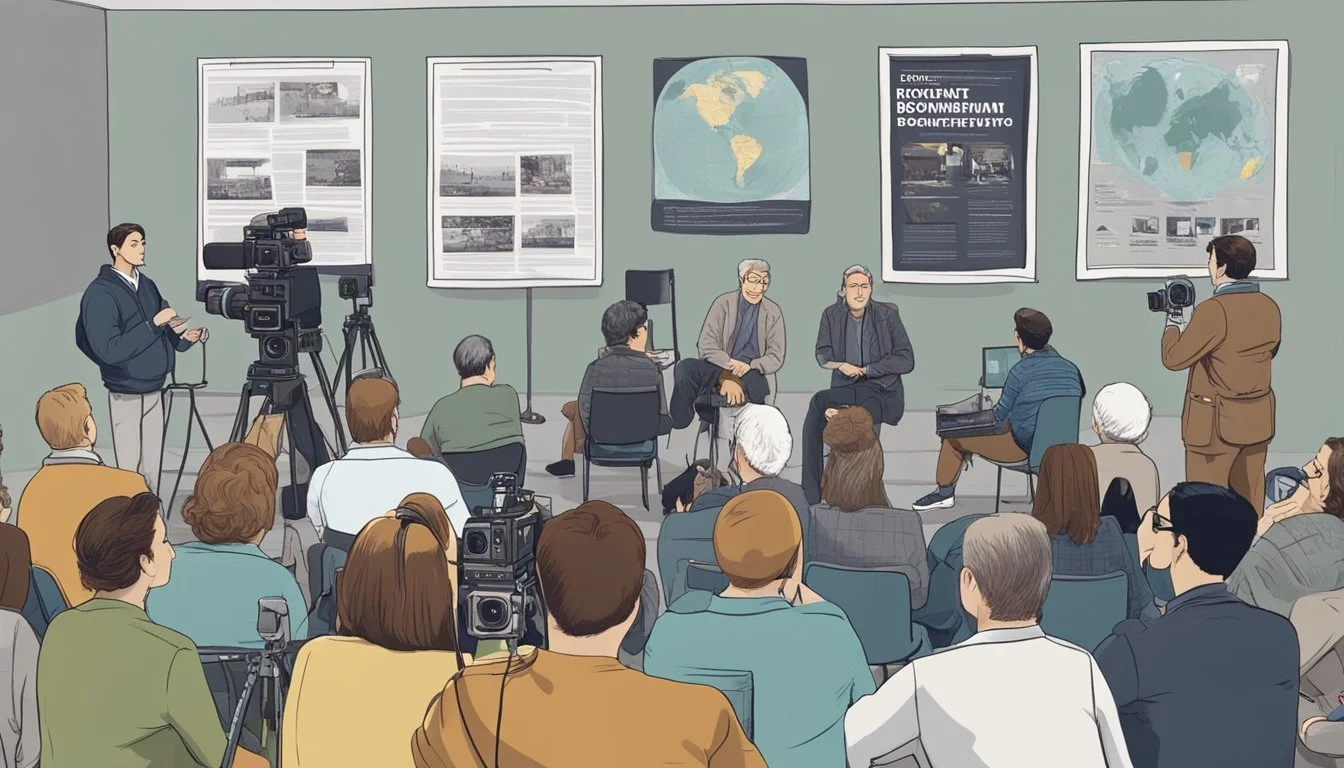Top Documentaries of 1984
Essential Viewing from a Pivotal Year
1984 was a significant year for documentary filmmaking, producing several notable works that continue to resonate with audiences today. These documentaries covered a wide range of subjects, from political and social issues to cultural phenomena and personal stories.
The top documentaries of 1984 showcased the power of non-fiction storytelling to inform, inspire, and provoke thought. Many of these films employed innovative techniques and approaches, pushing the boundaries of the documentary form. Some gained critical acclaim and awards recognition, while others found devoted audiences through word-of-mouth and later discoveries.
1) The Times of Harvey Milk (1984)
The Times of Harvey Milk is a groundbreaking documentary directed by Rob Epstein. It chronicles the life and political career of Harvey Milk, one of the first openly gay elected officials in the United States.
The film combines archival footage and interviews to paint a vivid portrait of Milk's rise to prominence in San Francisco politics. It details his activism, election to the Board of Supervisors, and tragic assassination in 1978.
Narrated by Harvey Fierstein, the documentary provides insight into the gay rights movement of the 1970s. It showcases Milk's charismatic personality and his ability to build coalitions across diverse communities.
The Times of Harvey Milk received critical acclaim upon release. It won the Academy Award for Best Documentary Feature in 1985, cementing its place in film history.
The documentary's impact extends beyond its initial release. It has inspired subsequent works, including an opera and Gus Van Sant's 2008 biopic Milk.
2) Stop Making Sense (1984)
Stop Making Sense is a groundbreaking concert film featuring the American rock band Talking Heads. Directed by Jonathan Demme, it captures the band's electrifying live performance at Hollywood's Pantages Theatre in December 1983.
The film stands out for its innovative approach to concert documentation. It begins with lead singer David Byrne performing solo and gradually introduces band members and additional musicians as the show progresses.
Demme's direction emphasizes the energy and artistry of the band's performance. The film avoids typical concert film techniques, instead focusing on the musicians and their interactions on stage.
Critics widely regard Stop Making Sense as one of the greatest concert films ever made. Its unique visual style and the band's dynamic performance contribute to its enduring appeal.
The film showcases Talking Heads at the peak of their creative powers, featuring songs from their album "Speaking in Tongues" as well as earlier hits. The band's infectious energy and Byrne's charismatic stage presence are central to the film's success.
Stop Making Sense remains influential in both music and film circles, setting a high standard for concert documentaries. Its restoration and re-release continue to introduce new audiences to this landmark work.
More information on Stop Making Sense
3) Koyaanisqatsi (1982)
Koyaanisqatsi is a groundbreaking experimental documentary that defies traditional filmmaking conventions. Directed by Godfrey Reggio, it features no dialogue or narration, relying solely on striking visuals and a powerful musical score by Philip Glass.
The film's title comes from the Hopi language, meaning "life out of balance." Through a series of mesmerizing time-lapse and slow-motion sequences, it explores the relationship between humans, nature, and technology.
Cinematographer Ron Fricke captures breathtaking landscapes and bustling cityscapes across the United States. The juxtaposition of natural beauty with industrial progress creates a thought-provoking commentary on modern life.
Koyaanisqatsi's innovative approach to documentary filmmaking influenced many subsequent works. Its visual style and use of music to convey meaning set it apart from conventional documentaries of its time.
Despite its unconventional nature, the film gained critical acclaim and a cult following. It challenges viewers to contemplate the impact of human activity on the world around us.
4) The Killing Fields
The Killing Fields (1984) is a powerful documentary-style film directed by Roland Joffé. It portrays the Cambodian genocide under the Khmer Rouge regime through the eyes of two journalists.
The movie follows New York Times reporter Sydney Schanberg and his Cambodian colleague Dith Pran. Their experiences during and after the fall of Phnom Penh in 1975 are vividly depicted.
Sam Waterston plays Schanberg, while Haing S. Ngor, a real-life survivor of the Khmer Rouge, portrays Pran. Ngor's performance earned him an Academy Award for Best Supporting Actor.
The film's title refers to sites in Cambodia where large numbers of people were killed and buried by the regime. It unflinchingly depicts the brutality of the Khmer Rouge and its impact on ordinary Cambodians.
Critics praised The Killing Fields for its historical accuracy and emotional power. It won three Academy Awards and brought international attention to the Cambodian genocide.
More information on The Killing Fields
5) Streetwise
"Streetwise" (1984) is a groundbreaking documentary that offers a raw glimpse into the lives of homeless youth in Seattle. Directed by Martin Bell, the film follows several teenagers as they navigate life on the streets.
The documentary emerged from a Life magazine article by Cheryl McCall and photographer Mary Ellen Mark. It captures the harsh realities faced by these young individuals, including poverty, drug use, and survival sex work.
One of the film's most memorable subjects is Erin Blackwell, known as "Tiny." Her story, along with those of other teens like Rat and Dewayne, provides a poignant look at the challenges of street life.
"Streetwise" stands out for its unflinching portrayal of youth homelessness. The film's candid approach and intimate access to its subjects contributed to its critical acclaim and enduring impact.
The documentary received an Academy Award nomination for Best Documentary Feature. It remains a powerful testament to the resilience of marginalized youth and the complexities of urban poverty.
More information on "Streetwise" (1984)
6) Expedition: Bismarck (2002)
Expedition: Bismarck is a documentary film produced by James Cameron and Andrew Wight for the Discovery Channel. The film explores the wreckage of the German battleship Bismarck, which sank during World War II.
Cameron led an underwater expedition to examine the Bismarck's remains on the ocean floor. Using advanced technology, the team captured detailed footage of the wreck site.
The documentary combines this underwater exploration with historical reenactments and computer-generated imagery. It reconstructs key events leading to the Bismarck's sinking in 1941.
Narrated by Lance Henriksen, the film provides insights into the Bismarck's brief but impactful naval career. It examines the ship's role in the sinking of the British battlecruiser HMS Hood.
Expedition: Bismarck offers viewers a unique perspective on this significant World War II naval engagement. It blends historical analysis with cutting-edge underwater archaeology techniques.
More information on Expedition: Bismarck
7) Cosmos: A Personal Voyage (1980)
Cosmos: A Personal Voyage is a groundbreaking television series that captivated audiences with its exploration of the universe. Hosted by renowned astronomer Carl Sagan, the 13-episode series aired in 1980.
The documentary takes viewers on a journey through space and time, covering topics from the origins of life to the possibility of extraterrestrial civilizations. Sagan's charismatic presentation style made complex scientific concepts accessible to a wide audience.
Cosmos utilized state-of-the-art special effects for its time, bringing distant galaxies and astronomical phenomena to life on screen. The series also incorporated historical reenactments to illustrate the development of scientific thought throughout human history.
While not released in 1984, Cosmos: A Personal Voyage had a lasting impact on science education and popularization. It inspired a generation of scientists and space enthusiasts, cementing its place as one of the most influential documentaries of the 20th century.
More information on Cosmos: A Personal Voyage
8) Atomic Café (1982)
The Atomic Café is a darkly comedic documentary that offers a unique perspective on America's nuclear anxieties during the Cold War era. Directed by Jayne Loader, Kevin Rafferty, and Pierce Rafferty, the film eschews traditional narration.
Instead, it presents a carefully curated collection of archival footage from government propaganda films, newsreels, and military training videos. This approach allows viewers to experience the era's nuclear paranoia firsthand.
The film's strength lies in its ability to showcase the often absurd and contradictory messages presented to the American public about nuclear warfare. It highlights how authorities attempted to downplay the dangers of atomic weapons.
Atomic Café's satirical edge comes from juxtaposing cheerful educational films with sobering footage of nuclear tests and their aftermath. This stark contrast effectively exposes the disconnect between official messaging and reality.
Critics praised the documentary for its innovative editing and thought-provoking content. It has since become a cult classic and an important historical document of Cold War-era attitudes towards nuclear threats.
More information on The Atomic Café
9) Burden of Dreams (1982)
Burden of Dreams captures the tumultuous production of Werner Herzog's Fitzcarraldo in the Peruvian Amazon. Directed by Les Blank, this documentary offers an unvarnished look at Herzog's ambitious and perilous filmmaking process.
The film follows Herzog as he faces numerous obstacles, including the recasting of his lead actor and the monumental task of hauling a 320-ton steamship over a mountain. Blank's camera unflinchingly records the physical and emotional toll on both cast and crew.
Herzog's determination and the project's growing challenges form the core of the narrative. The documentary showcases the director's unwavering vision and the extreme lengths he goes to realize it on screen.
Burden of Dreams received critical acclaim upon release, winning the 1983 British Academy Film Award for Best Documentary. It remains a compelling study of artistic obsession and the often blurry line between genius and madness in filmmaking.
More information on Burden of Dreams
10) The Thin Blue Line (1988)
Errol Morris's "The Thin Blue Line" is a groundbreaking documentary that combines meticulous journalism with gripping drama. The film investigates the case of Randall Dale Adams, who was wrongfully convicted for the murder of a Dallas police officer.
Morris employs innovative techniques, including stylized reenactments and Philip Glass's haunting score, to create a compelling narrative. The documentary meticulously examines evidence and interviews key witnesses, revealing inconsistencies in the prosecution's case.
"The Thin Blue Line" had a significant real-world impact. Its revelations led to Adams's release from prison, showcasing the power of documentary filmmaking to effect change in the criminal justice system.
The film's influence extends beyond its immediate subject matter. It pioneered new approaches to documentary storytelling, blurring the lines between art and activism. This innovative style has inspired countless filmmakers in subsequent years.
Widely acclaimed, "The Thin Blue Line" has been recognized as one of the most important documentaries ever made. It continues to be studied and admired for its contribution to both cinema and social justice.
More information on "The Thin Blue Line"
Historical Context
1984 marked a significant year in documentary filmmaking, reflecting broader cultural shifts and technological advancements. The political climate, social movements, and evolving media landscape shaped the content and style of documentaries produced during this time.
Cultural Events of 1984
The Cold War remained a dominant global concern, influencing documentary subjects and perspectives. The Summer Olympics in Los Angeles showcased international competition and cultural exchange. MTV's popularity soared, changing music video production techniques that spilled into documentary aesthetics.
Apple's iconic "1984" commercial aired during the Super Bowl, hinting at the growing influence of technology. The AIDS crisis gained more public attention, spurring health-focused documentaries. Ronald Reagan's re-election campaign dominated U.S. political discourse.
Evolution of Documentary Filmmaking
Technological advancements in 1984 expanded possibilities for documentary filmmakers. The introduction of camcorders made filming more accessible and affordable. This led to an increase in personal and experimental documentaries.
Cinéma vérité techniques, popularized in the 1960s, continued to influence documentary styles. Filmmakers increasingly blended observational footage with interviews and archival material. The rise of cable television created new platforms for documentary distribution.
Documentaries began tackling more diverse and controversial subjects. Environmental issues, human rights, and cultural identity emerged as popular themes. The line between documentary and fiction film started to blur, with some filmmakers experimenting with hybrid forms.
Influential Directors
The 1980s saw several documentary filmmakers rise to prominence, shaping the genre with their unique styles and impactful works.
Prominent Filmmakers of the 1980s
Rob Epstein emerged as a significant voice in documentary filmmaking during this era. His 1984 film "The Times of Harvey Milk" garnered critical acclaim and won an Academy Award for Best Documentary Feature. The film chronicled the life and assassination of San Francisco's first openly gay elected official, Harvey Milk.
Errol Morris, another influential director, made waves with his innovative approach to documentary storytelling. Although his breakthrough film "The Thin Blue Line" came later in the decade, Morris was already developing his distinctive style in the early 1980s.
Richard Donner, while primarily known for his work in fiction films, also contributed to the documentary landscape. His versatility as a director allowed him to bring a cinematic flair to non-fiction storytelling.
These filmmakers helped elevate the documentary genre, pushing boundaries and exploring new techniques that would influence future generations of directors.
Impact on Modern Documentaries
Documentaries from 1984 pioneered techniques and storytelling approaches that continue to shape the genre today. Their influence extends to both content and form, setting new standards for documentary filmmaking.
Legacy and Influence
1984 documentaries left an indelible mark on the medium. "The Times of Harvey Milk" set a precedent for LGBTQ+ representation in non-fiction films. Its intimate portrayal of the gay rights activist's life and assassination resonated with audiences and critics alike.
"Streetwise" exposed the harsh realities of homeless youth, inspiring future filmmakers to tackle difficult social issues. The film's raw, unflinching approach became a template for socially conscious documentaries.
"28 Up", part of Michael Apted's groundbreaking "Up Series", demonstrated the power of longitudinal studies in documentary form. This innovative concept influenced numerous filmmakers to explore long-term documentary projects.
Innovative Techniques
Documentaries from 1984 introduced novel filmmaking methods that are still used today. "The Times of Harvey Milk" skillfully blended archival footage with interviews, creating a compelling narrative structure that has become standard practice.
"Streetwise" employed a cinéma vérité style, allowing subjects to tell their own stories with minimal interference. This approach enhanced authenticity and emotional impact, influencing future documentarians.
"28 Up" pioneered the use of recurring interviews over time, revealing how lives evolve. This technique has been adopted by many filmmakers to track societal changes and personal growth.
These films also experimented with non-linear storytelling and creative editing techniques, expanding the boundaries of documentary form and inspiring generations of filmmakers to push the envelope.








